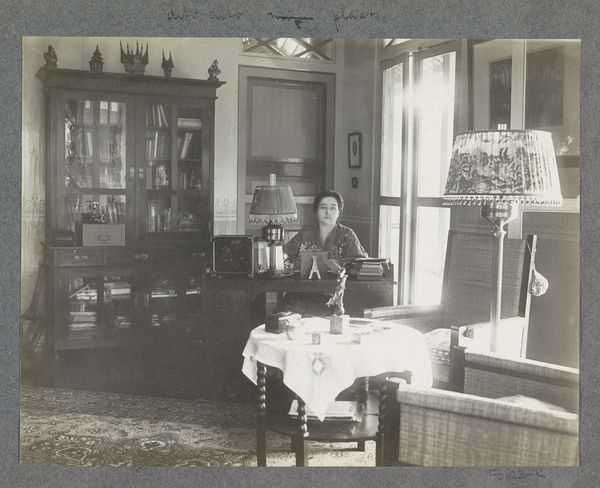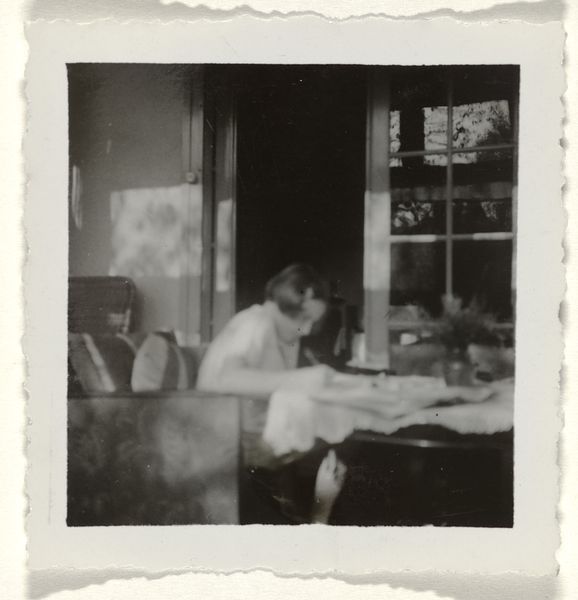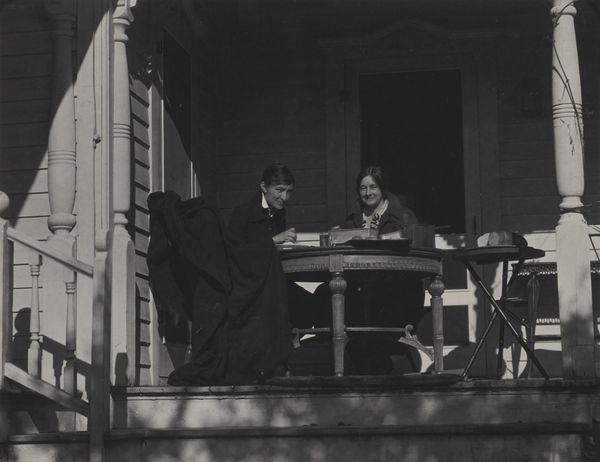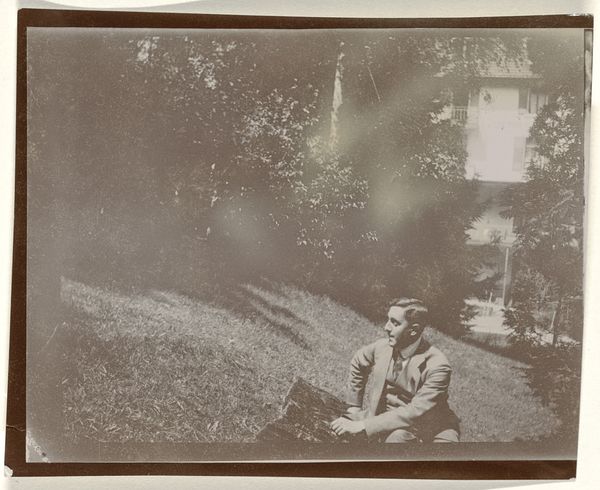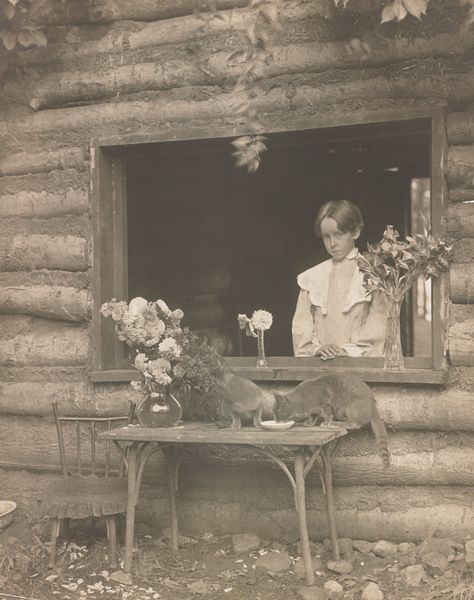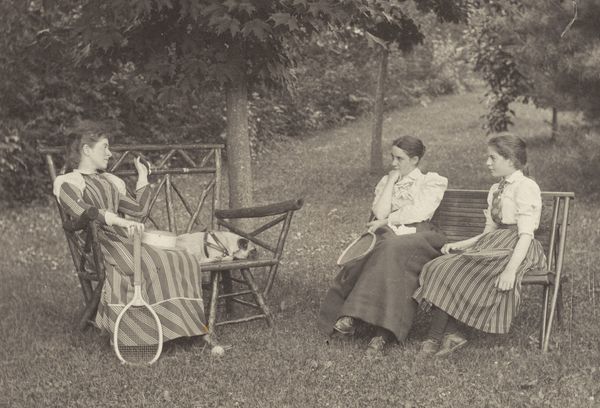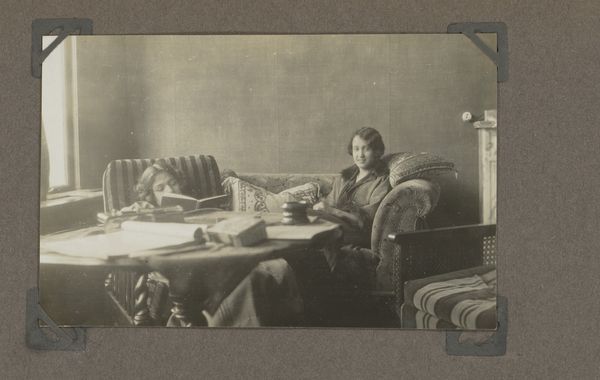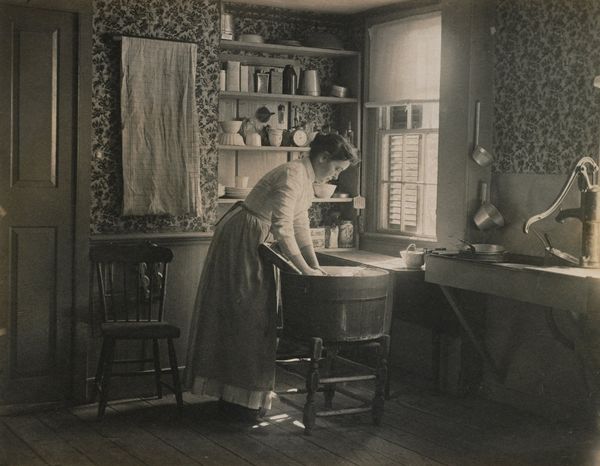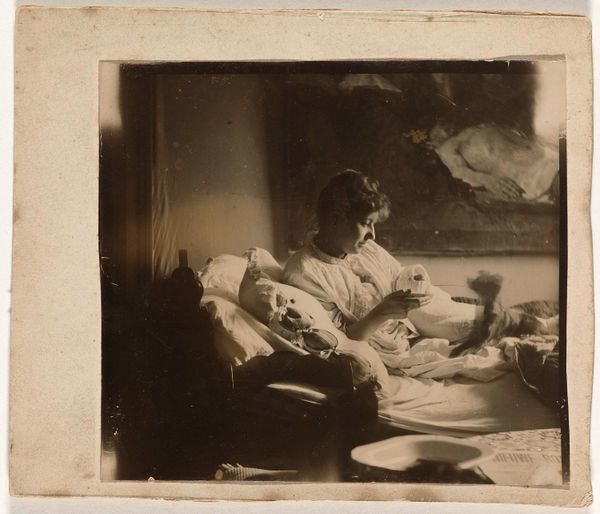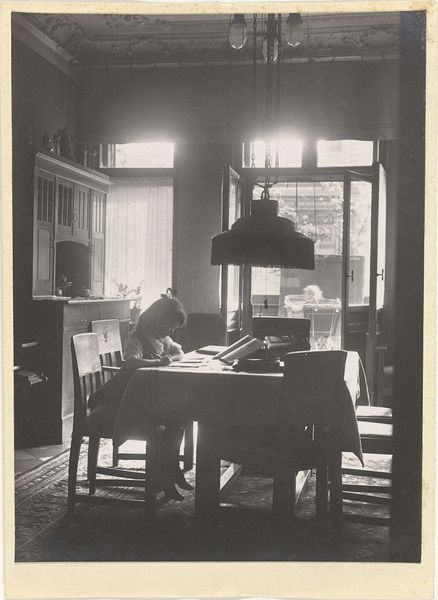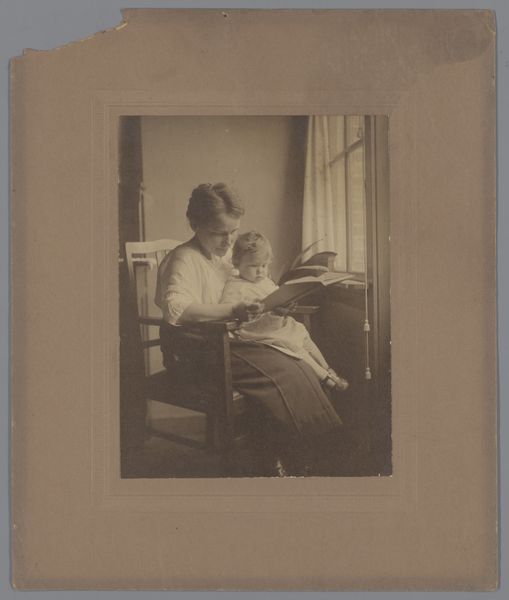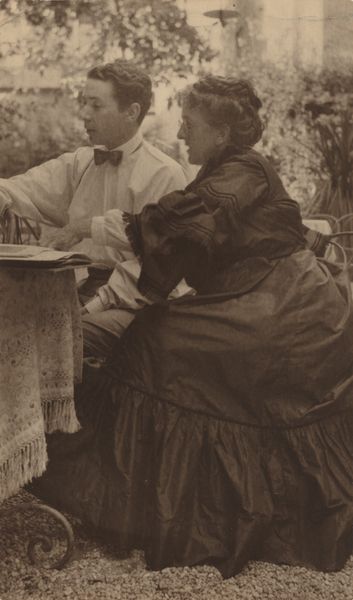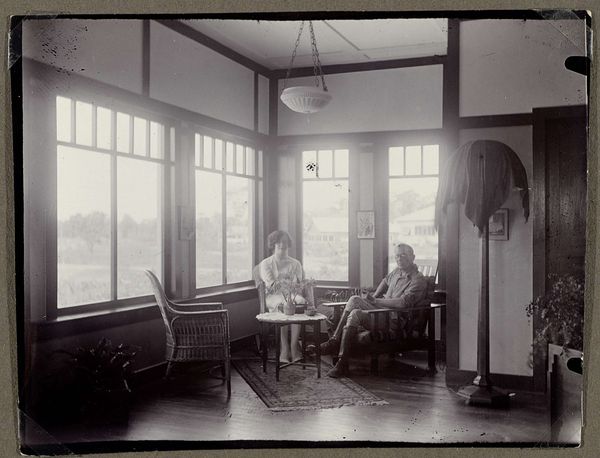
Dimensions: sheet (trimmed to image): 20.3 × 15.6 cm (8 × 6 1/8 in.) page size: 34.8 × 27 cm (13 11/16 × 10 5/8 in.)
Copyright: National Gallery of Art: CC0 1.0
Curator: Looking at Alfred Stieglitz's gelatin-silver print, "On the Porch, Oaklawn, Lake George," taken around 1893 to 1896, what strikes you? Editor: It feels overwhelmingly staged, despite the ostensibly casual domestic scene. The lighting, the pose, everything feels… deliberate. There’s a tension between capturing a moment and constructing one that’s really compelling. Curator: Precisely. Note the carefully arranged elements: the woman, likely his wife, deep in thought at her writing desk; the languid dog curled in the wicker chair; even the placement of the hanging plant. Each component contributes to a studied harmony. The monochrome palette enhances this sense of compositional control, reducing the scene to tonal relationships. Editor: But who has access to that sort of leisure? It reads very differently through the lens of class. She’s dressed in such a cumbersome striped dress for a casual afternoon. What labor went into that presumed relaxation? And the location too–Lake George as a retreat for the elite… It’s less about the technical composition and more about the lifestyle being presented, even celebrated, wouldn't you agree? Curator: I agree it's suggestive. Stieglitz, though, was intensely concerned with elevating photography to the level of fine art. Consider the impressionistic blurring in the background. It shows Stieglitz intentionally using the camera to create painterly effects and demonstrating the artistic potential inherent in the medium. Editor: That stylistic choice, intended as artistic elevation, unintentionally reveals a privileged worldview. By focusing solely on aesthetics, it reinforces exclusion, romanticizes the lives of the affluent, and renders invisible the socio-economic structures enabling it all. What are we meant to take away from such constructed perfection? Curator: Perhaps that within the carefully arranged artifice, Stieglitz reveals not just the scene itself but also his subjective interpretation of it. The photo is both documentary and deeply personal, revealing his perception of domestic tranquility. Editor: So maybe that photograph's staged stillness is a mirror reflecting the complex relationship between art, artist, and social power, compelling us to consider who gets to be seen. Curator: Well articulated. It’s an exercise in studying visual relationships and how they reveal, and also conceal.
Comments
No comments
Be the first to comment and join the conversation on the ultimate creative platform.
